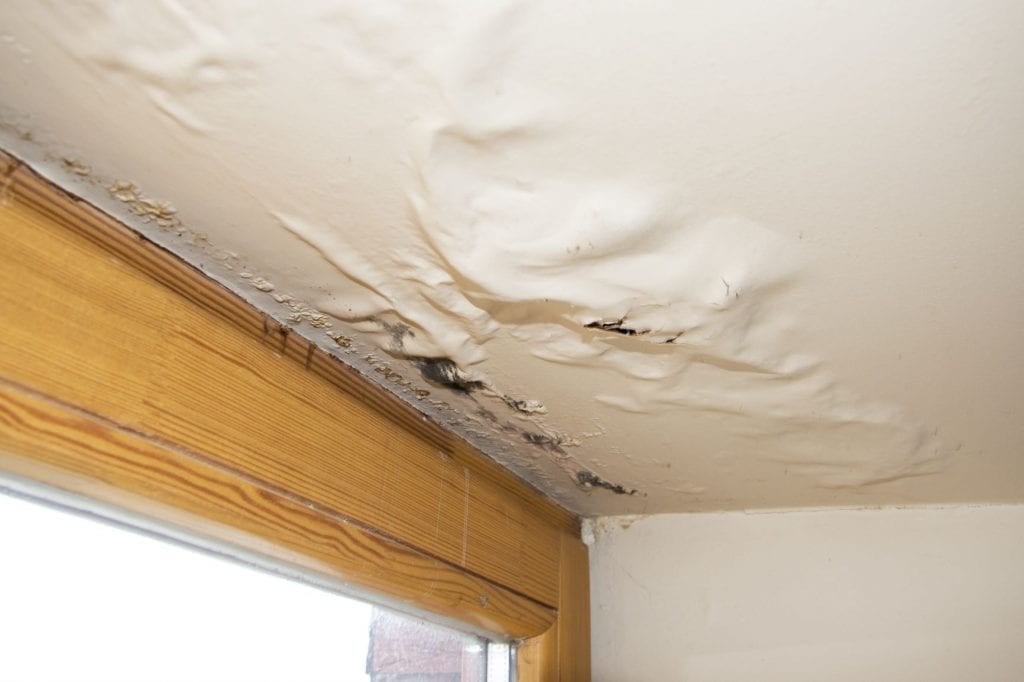Water leaking through the ceiling after a bath can be a frustrating and costly problem. It can cause damage to the ceiling, walls, and floor below, and it can also lead to mold and mildew growth. In some cases, it can even be a sign of a more serious underlying problem, such as a leaking roof or damaged pipes.

Causes of Water Leaks
There are a number of possible causes of water leaks through the ceiling after a bath. Some of the most common causes include:
- Damaged pipes: Damaged pipes are a common cause of water leaks. This damage can be caused by a number of factors, including corrosion, wear and tear, or even a sudden impact.
- Loose or damaged seals: Loose or damaged seals can allow water to seep through the pipes and into the ceiling. You can locate these seals at the joints between pipes, fittings, and fixtures.
- Clogged drains: Clogged drains can cause water to back up and leak into the ceiling. This is often caused by hair, soap scum, or other debris that builds up in the drain.
- Damaged roof or gutters: Damaged roofs or gutters can allow water to leak into the ceiling. Several factors, such as wind damage, hail, or ice dams, can cause this.
Solutions for Water Leaks
The solution for a water leak will depend on the cause of the leak. In certain instances, fixing the leak can be a straightforward process involving a few simple steps. In other cases, the leak may require professional assistance.
If damaged pipes are the root cause of the leak, you will need to repair or replace the pipes. This can be a difficult and time-consuming task, so it is best to hire a professional plumber.
If loose or damaged seals are the cause of the leak, you will need to replace the seals. Homeowners can easily accomplish this task.
If the leak is caused by clogged drains, the drains will need to be cleared. This can be done with a plunger or a drain snake.
If damage to the roof or gutters is responsible for the leak, you will need to repair the damage. This is a task that is best left to a professional roofer.
Preventing Water Leaks
There are a number of things that can be done to prevent water leaks through the ceiling after a bath. Some of the most important preventive measures include:
- Regularly inspect the pipes and drains for damage. You can do this by inspecting for any indications of cracks, leaks, or corrosion.
- Clean the gutters and downspouts regularly. This will help to prevent water from backing up and leaking into the house.
- Use a plunger or drain snake to clear clogged drains. This will help to prevent water from backing up and leaking into the house.
- Have the roof inspected regularly for damage. This is especially important if you live in an area with severe weather.
Read too: How To Fix Condensation On Ceiling
Additional Tips
In addition to the preventive measures listed above, there are a few additional tips that can help to prevent water leaking through the ceiling after a bath. These tips include:
- Install a water leak detector. A water leak detector can alert you to a leak before it causes damage.
- Use a shower curtain or liner. A shower curtain or liner can help to prevent water from splashing onto the floor and causing damage to the ceiling.
- Turn off the water when you leave the bathroom. This will help to prevent leaks if a pipe bursts.
By following these tips, homeowners can help to keep their homes dry and safe.
Additional Content
Here are some additional tips for preventing water leaks through the ceiling after a bath:
- Use a high-quality shower curtain or liner. A cheap shower curtain or liner is more likely to tear or leak.
- Inspect the shower curtain or liner regularly for damage. If you see any tears or holes, replace the curtain or liner immediately.
- Keep the shower curtain or liner clean. A dirty shower curtain or liner can harbor mold and mildew, which can damage the ceiling.
- Clean the shower regularly. A dirty shower can lead to soap scum buildup, which can clog drains and cause leaks.
- Use a plunger or drain snake regularly to clear clogged drains. A clogged drain can cause water to back up and leak into the ceiling.
By following these tips, homeowners can help to keep their homes dry and safe.